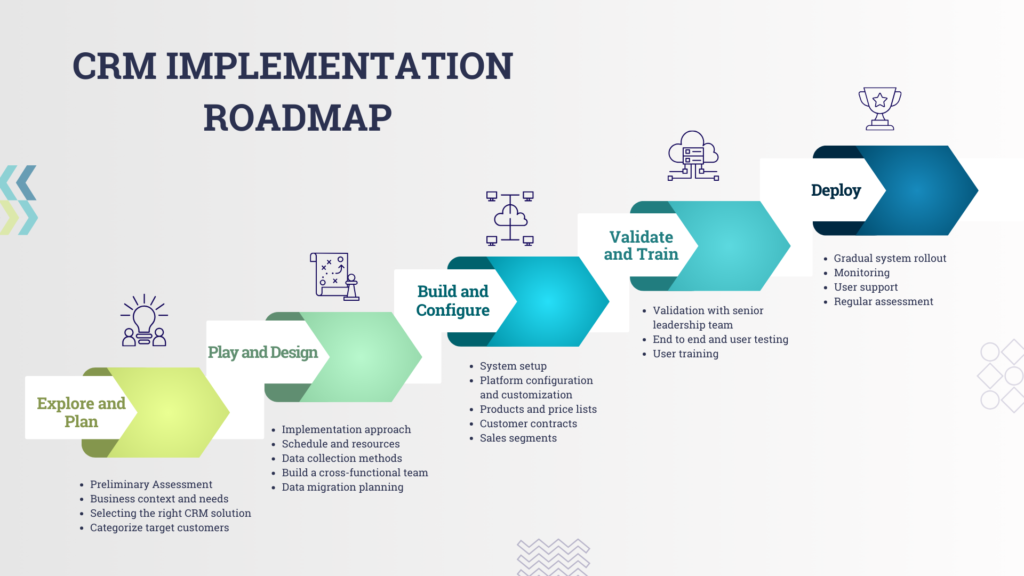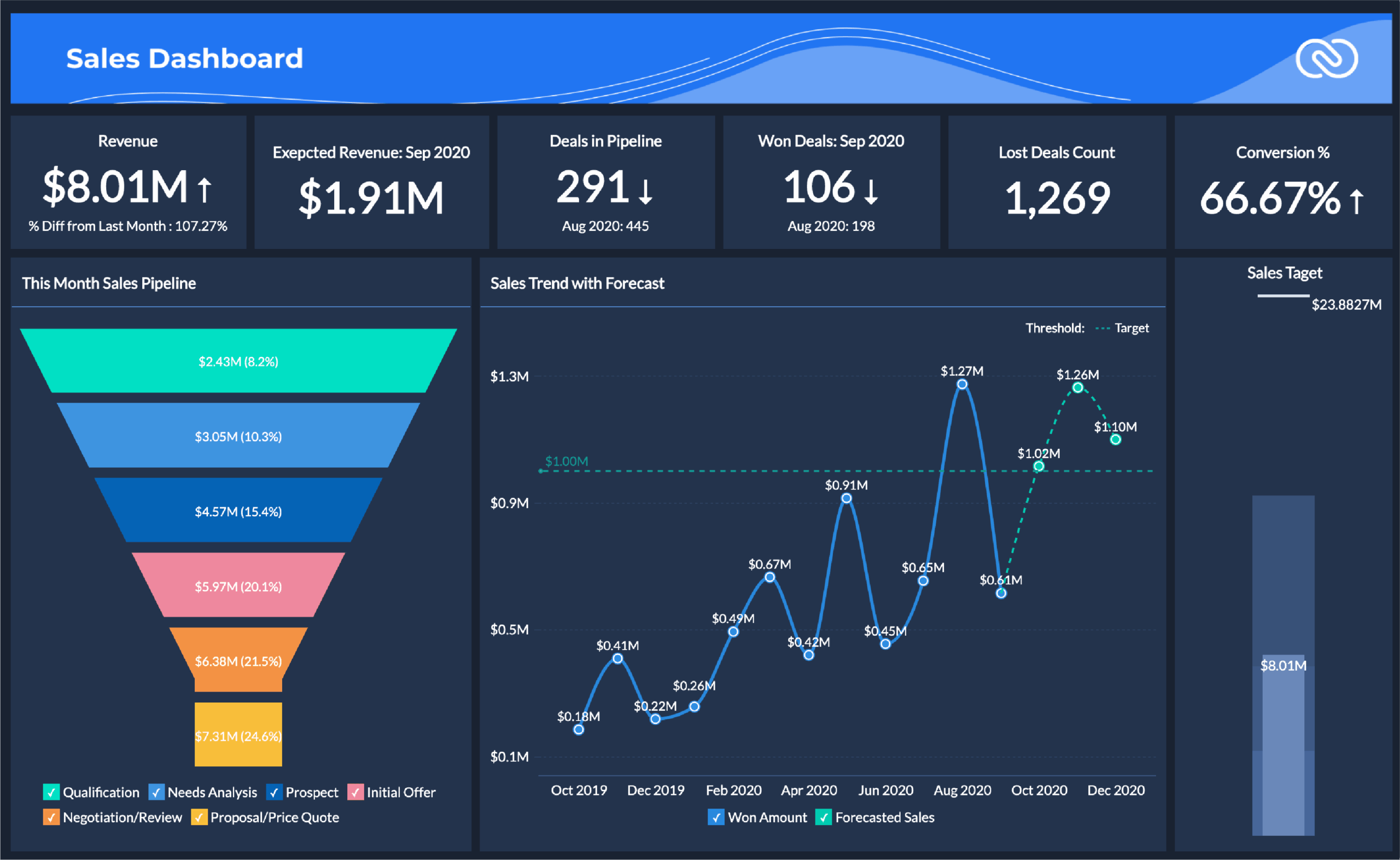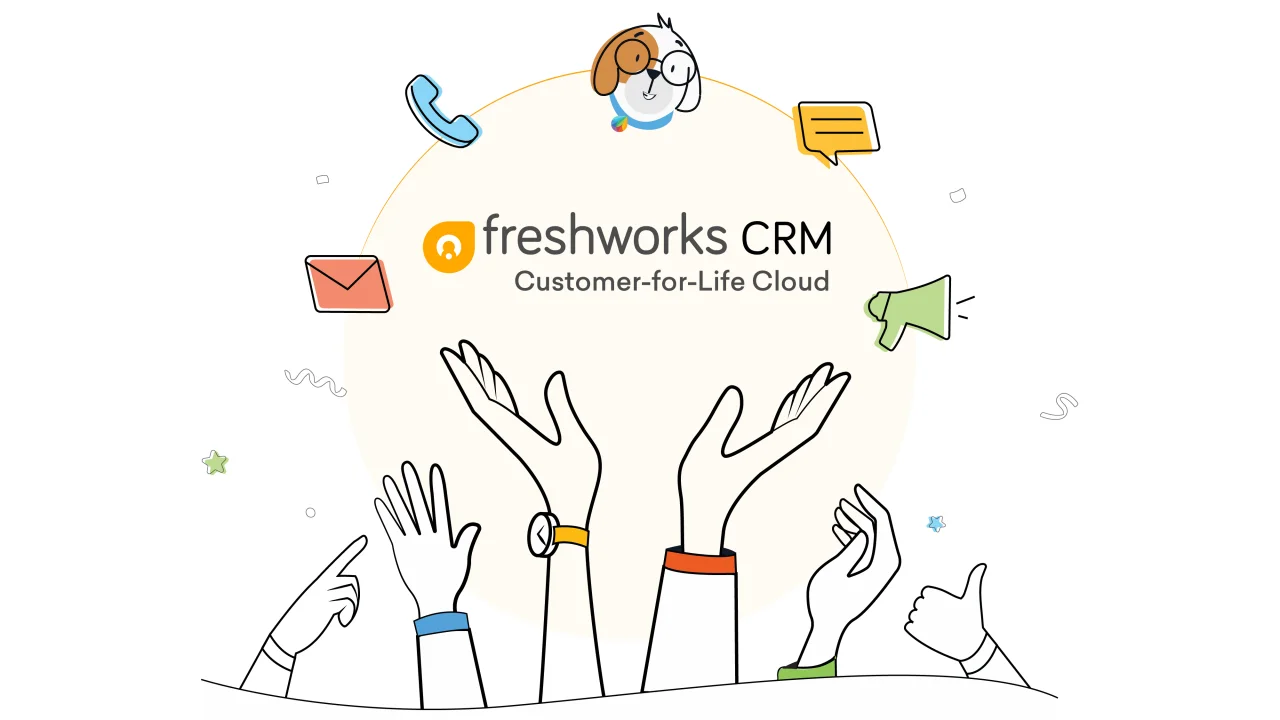CRM Marketing & A/B Testing: The Ultimate Guide to Supercharging Your Customer Engagement
In today’s fast-paced digital landscape, businesses are constantly seeking ways to connect with their customers more effectively. The combination of Customer Relationship Management (CRM) marketing and A/B testing offers a powerful strategy to not only understand your audience better but also to optimize your marketing efforts for maximum impact. This comprehensive guide delves into the intricacies of CRM marketing and A/B testing, providing you with the knowledge and tools needed to transform your customer engagement strategies.
What is CRM Marketing?
CRM marketing is a customer-centric approach that leverages the data and insights within your CRM system to create personalized and targeted marketing campaigns. It’s about understanding your customers’ needs, preferences, and behaviors to deliver relevant messages at the right time. This approach goes far beyond generic, one-size-fits-all marketing; it’s about building meaningful relationships with each individual customer.
Key Components of CRM Marketing
- Customer Data Collection: Gathering comprehensive customer data, including demographics, purchase history, website activity, and communication preferences.
- Segmentation: Grouping customers based on shared characteristics and behaviors to tailor marketing messages.
- Personalization: Creating customized content and experiences that resonate with individual customer segments.
- Automation: Using CRM tools to automate marketing tasks, such as email campaigns and lead nurturing workflows.
- Analytics and Reporting: Tracking key performance indicators (KPIs) to measure the effectiveness of CRM marketing efforts and make data-driven decisions.
The Power of A/B Testing in Marketing
A/B testing, also known as split testing, is a method of comparing two versions of a marketing asset (e.g., email, landing page, ad) to determine which one performs better. It involves showing different versions to different segments of your audience and analyzing the results to identify the most effective elements. A/B testing is an iterative process, allowing you to continuously refine your marketing campaigns and improve your results.
Why A/B Testing is Crucial
- Data-Driven Decision Making: A/B testing provides concrete data to support your marketing decisions, reducing guesswork and subjective opinions.
- Improved Conversion Rates: By optimizing your marketing assets, you can increase conversion rates, leading to more leads, sales, and revenue.
- Enhanced Customer Experience: A/B testing allows you to tailor your marketing messages and experiences to better meet your customers’ needs and preferences.
- Increased ROI: By optimizing your campaigns, you can maximize your return on investment (ROI) and achieve your marketing goals more efficiently.
Combining CRM Marketing and A/B Testing: A Synergistic Approach
The true power of CRM marketing and A/B testing lies in their synergy. By integrating these two strategies, you can create highly effective and personalized marketing campaigns that drive significant results. Here’s how they work together:
1. Data-Driven Segmentation
Your CRM system provides a wealth of data that can be used to segment your audience based on various criteria, such as demographics, purchase history, and website behavior. This segmentation allows you to target specific groups with tailored marketing messages. For example, you can segment customers who have abandoned their shopping carts and send them a personalized email with a special offer to encourage them to complete their purchase.
2. Hypothesis Generation
Based on your customer data and marketing goals, you can formulate hypotheses about what will resonate with different customer segments. For instance, you might hypothesize that a subject line with a specific keyword will increase email open rates among a particular segment. This is where your creativity meets the analytical power of your CRM data.
3. A/B Testing Implementation
Using your CRM system and A/B testing tools, you can create different versions of your marketing assets (e.g., email subject lines, landing page headlines, call-to-action buttons) and test them on different segments of your audience. For example, you could test two different email subject lines to see which one generates a higher open rate among a specific customer segment. This is the experimentation phase where you gather real-world insights.
4. Data Analysis and Insights
After running your A/B tests, you’ll analyze the results to determine which versions performed best. Your CRM system can provide valuable insights into customer behavior and preferences, helping you understand why certain variations were more effective than others. This analysis is crucial for learning and refining your strategies.
5. Optimization and Iteration
Based on the results of your A/B tests, you’ll optimize your marketing campaigns by implementing the winning variations. You can then continue to iterate and refine your campaigns by running new A/B tests, constantly striving to improve your results. This is the continuous improvement cycle that drives long-term success.
Practical Examples of CRM Marketing and A/B Testing in Action
Example 1: Email Marketing Optimization
Scenario: An e-commerce company wants to increase its email click-through rates.
CRM Data: The company uses its CRM to segment its customers based on their purchase history (e.g., first-time buyers, repeat customers, high-value customers).
Hypothesis: Personalized email subject lines and content will lead to higher click-through rates.
A/B Testing: The company tests different email subject lines (e.g., “Welcome Back, [Customer Name]!” vs. “New Arrivals for You”) and different email content variations (e.g., featuring products related to previous purchases vs. promoting a general sale).
Results: The personalized email subject line and content featuring products related to previous purchases significantly outperformed the control group.
Optimization: The company implemented the winning variations in its email marketing campaigns.
Example 2: Landing Page Optimization
Scenario: A software company wants to increase its lead generation on its landing page.
CRM Data: The company uses its CRM to track website visitor behavior and identify potential leads.
Hypothesis: Changing the call-to-action (CTA) button text and placement will increase conversion rates.
A/B Testing: The company tests different CTA button texts (e.g., “Get a Free Trial” vs. “Request a Demo”) and different CTA button placements on the landing page.
Results: The CTA button text “Request a Demo” and a prominent placement on the page led to a higher conversion rate.
Optimization: The company implemented the winning variations on its landing page.
Example 3: Customer Retention Strategies
Scenario: A subscription service wants to reduce customer churn.
CRM Data: The company uses its CRM to identify customers at risk of churning based on their engagement levels and usage patterns.
Hypothesis: Personalized win-back emails and targeted offers will reduce churn rates.
A/B Testing: The company tests different win-back email subject lines, content variations (e.g., offering discounts, highlighting new features), and offers.
Results: A win-back email with a special discount and a personalized message significantly reduced churn rates.
Optimization: The company implemented the winning win-back email strategy.
Tools and Technologies for CRM Marketing and A/B Testing
CRM Software
Selecting the right CRM software is crucial for successful CRM marketing. Consider these popular options:
- Salesforce: A comprehensive CRM platform with robust marketing automation capabilities.
- HubSpot CRM: A user-friendly CRM with integrated marketing tools, ideal for small to medium-sized businesses.
- Zoho CRM: A versatile CRM with a wide range of features and integrations.
- Microsoft Dynamics 365: A powerful CRM solution with advanced analytics and reporting.
- Pipedrive: A sales-focused CRM that helps manage leads and track deals.
A/B Testing Platforms
Choose an A/B testing platform that integrates seamlessly with your CRM and marketing tools:
- Google Optimize: A free A/B testing tool integrated with Google Analytics.
- Optimizely: A leading A/B testing and personalization platform.
- VWO (Visual Website Optimizer): A user-friendly A/B testing platform with advanced features.
- Convert Experiences: A privacy-focused A/B testing platform.
- AB Tasty: An all-in-one conversion rate optimization platform.
Email Marketing Platforms
These platforms can be integrated with your CRM for targeted email campaigns:
- Mailchimp: A popular email marketing platform with automation features.
- Sendinblue: An all-in-one marketing platform with email marketing, SMS, and chat.
- GetResponse: An email marketing platform with automation and webinar features.
- ActiveCampaign: An email marketing platform with advanced automation and CRM capabilities.
- Constant Contact: A user-friendly email marketing platform for small businesses.
Best Practices for CRM Marketing and A/B Testing
Data Privacy and Compliance
Always prioritize data privacy and comply with relevant regulations, such as GDPR and CCPA. Obtain consent from your customers before collecting and using their data. Be transparent about how you use their data and provide them with options to control their information.
Data Quality
Ensure the accuracy and completeness of your customer data. Regularly clean and update your CRM data to avoid errors and inconsistencies. This will help you make better decisions and personalize your marketing campaigns more effectively.
Define Clear Goals
Before launching any A/B tests, define clear and measurable goals. What do you want to achieve? Increase conversion rates? Improve click-through rates? Reduce churn? Having clear goals will help you design your tests and analyze the results more effectively.
Focus on One Variable at a Time
When running A/B tests, focus on testing one variable at a time. This will make it easier to identify which element is driving the results. Testing multiple variables simultaneously can make it difficult to determine which changes are responsible for the outcome.
Test on Sufficient Sample Sizes
Ensure you have a sufficient sample size for your A/B tests to achieve statistical significance. This means that your results are not due to chance. Use A/B testing calculators to determine the appropriate sample size based on your conversion rates and desired level of confidence.
Analyze Results Thoroughly
Don’t just look at the overall results of your A/B tests. Dive deeper and analyze the data to understand why certain variations performed better than others. Consider factors such as customer segments, device types, and traffic sources.
Iterate and Optimize
A/B testing is an iterative process. Continuously test, analyze, and optimize your marketing campaigns to achieve the best results. Don’t be afraid to experiment and try new things. The more you test, the better you’ll understand your audience and improve your marketing performance.
Integrate CRM and A/B Testing Tools
Make sure your CRM and A/B testing tools are integrated to streamline your workflow and gain a holistic view of your customer data and campaign performance. This integration will allow you to easily segment your audience, personalize your campaigns, and track the results of your A/B tests.
Personalize Everything
The core tenet of CRM marketing is personalization. Use the data in your CRM to tailor every aspect of your marketing efforts, from email subject lines and website content to product recommendations and special offers. The more personalized your marketing is, the more likely it is to resonate with your customers.
Stay Organized
Keep track of all your A/B tests, including your hypotheses, variations, results, and learnings. This will help you avoid repeating mistakes and build a knowledge base of what works and what doesn’t. Use a spreadsheet or a dedicated A/B testing platform to manage your tests.
Challenges and Solutions
Data Silos
Challenge: Data silos can make it difficult to get a complete view of your customers and their interactions. This can hinder your ability to personalize your marketing campaigns.
Solution: Integrate your CRM with other marketing and sales tools to create a unified view of your customer data. Use data management platforms (DMPs) to consolidate and organize your customer data.
Lack of Expertise
Challenge: You may lack the in-house expertise to effectively implement CRM marketing and A/B testing.
Solution: Invest in training for your marketing team. Hire experienced professionals or consider outsourcing to a marketing agency that specializes in CRM and A/B testing.
Limited Resources
Challenge: You may have limited resources, such as budget and time, to dedicate to CRM marketing and A/B testing.
Solution: Start small and focus on the most impactful areas. Prioritize your efforts based on your business goals and the potential ROI. Utilize free or low-cost tools to get started.
Data Privacy Concerns
Challenge: Data privacy regulations can make it challenging to collect and use customer data.
Solution: Comply with all relevant data privacy regulations, such as GDPR and CCPA. Be transparent with your customers about how you collect and use their data. Obtain consent before collecting and using their data.
The Future of CRM Marketing and A/B Testing
The future of CRM marketing and A/B testing is bright, driven by advancements in technology and the increasing importance of customer-centric strategies. Here are some key trends to watch:
Artificial Intelligence (AI) and Machine Learning (ML)
AI and ML are transforming CRM marketing and A/B testing. AI can be used to automate marketing tasks, personalize customer experiences, and predict customer behavior. ML can be used to analyze large datasets and identify patterns that humans might miss. Expect to see more AI-powered tools that can help you optimize your marketing campaigns and improve your results.
Hyper-Personalization
As customers demand more personalized experiences, hyper-personalization will become increasingly important. This involves using data to create highly customized marketing messages and experiences that are tailored to individual customer needs and preferences. This level of personalization can lead to higher engagement rates and conversions.
Omnichannel Marketing
Customers interact with businesses across multiple channels, including email, social media, websites, and mobile apps. Omnichannel marketing involves creating a seamless and consistent customer experience across all channels. This requires integrating your CRM with your marketing automation tools and other channels to deliver a unified brand experience.
Predictive Analytics
Predictive analytics uses data to forecast future customer behavior. This can help you identify potential leads, predict customer churn, and personalize your marketing campaigns. By leveraging predictive analytics, you can proactively engage with your customers and improve their experience.
Focus on Customer Lifetime Value (CLTV)
Businesses are increasingly focused on maximizing customer lifetime value (CLTV). This involves building long-term relationships with customers and encouraging them to make repeat purchases. CRM marketing and A/B testing can help you improve CLTV by personalizing your marketing efforts, improving customer satisfaction, and reducing churn.
Conclusion
CRM marketing and A/B testing are essential strategies for businesses looking to thrive in today’s competitive market. By leveraging customer data, personalizing marketing messages, and continuously optimizing your campaigns, you can build stronger customer relationships, increase conversions, and drive revenue growth. Embrace these strategies, stay informed about the latest trends, and continuously refine your approach to achieve lasting success.





